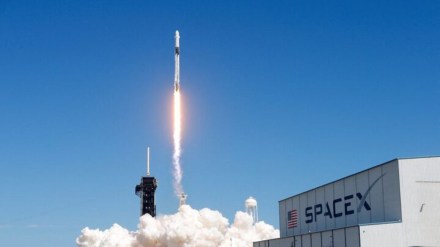SpaceX’s Falcon 9 encountered its first launch failure in nearly ten years when the Falcon 9 rocket carrying 20 Starlink satellites departed from California on Thursday night, PTI reported.
Shortly after liftoff, the upper stage engine malfunctioned, a problem attributed to a liquid oxygen leak, SpaceX said on Friday. Despite efforts by flight controllers to mitigate the situation by establishing contact with half of the satellites and attempting to maneuver them to a higher orbit using ion thrusters, the satellites ended up in an orbit only 84 miles (135 kilometers) above Earth—significantly lower than planned. SpaceX conceded that the available thrust might not be adequate to correct the orbit, leading to the inevitable reentry and destruction of the satellites in the Earth’s atmosphere.
Currently, more than 6,000 operational Starlink satellites provide essential internet services to remote regions worldwide. The Federal Aviation Administration has mandated that SpaceX resolve the issue before permitting future Falcon rocket launches, raising concerns about potential impacts on upcoming crewed missions.
A private spaceflight led by tech entrepreneur Jared Isaacman is scheduled for July 31 from Florida, featuring plans for the first private spacewalk, followed by an astronaut mission to the International Space Station in mid-August under NASA’s auspices.
Despite this setback, Isaacman expressed confidence in Falcon 9’s historical reliability and its emergency escape systems. SpaceX CEO Elon Musk highlighted the advantage of their frequent launch cadence in swiftly identifying and rectifying technical issues, drawing on past incidents in 2015 and 2016 as learning opportunities to enhance safety and operational standards.
